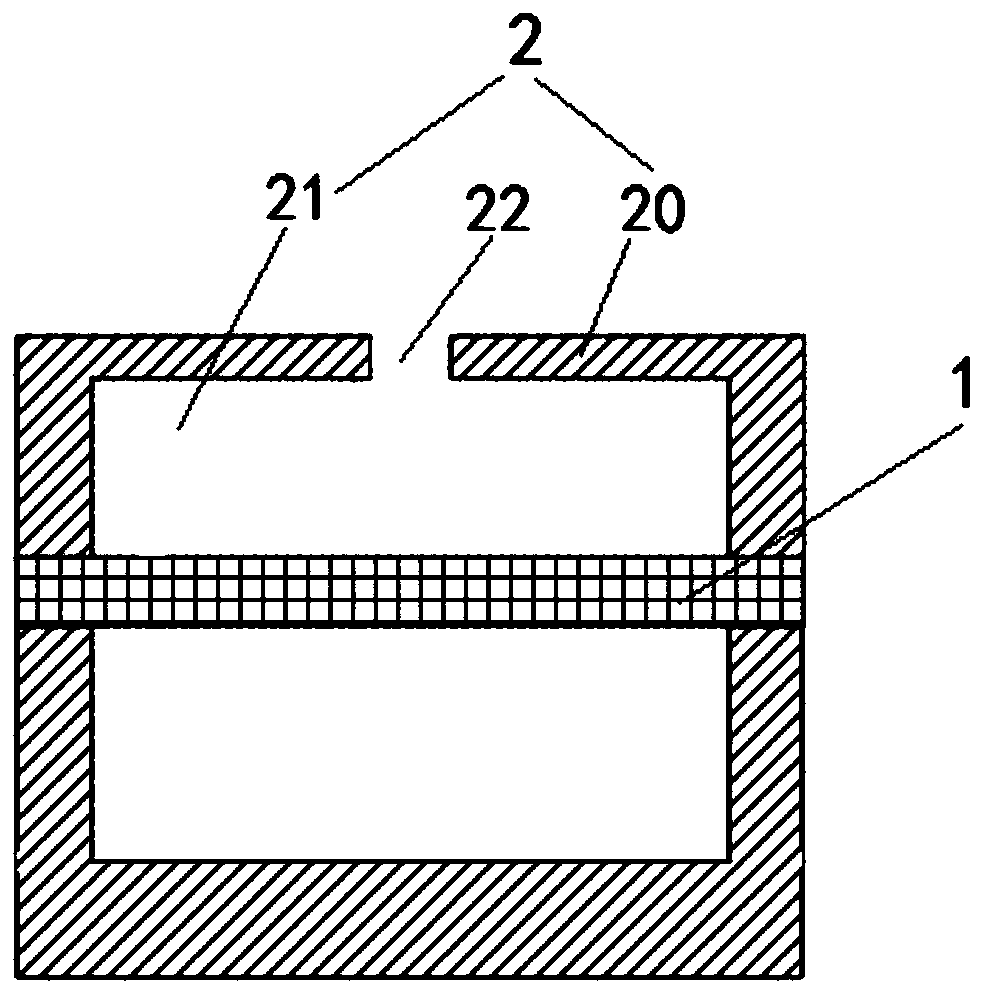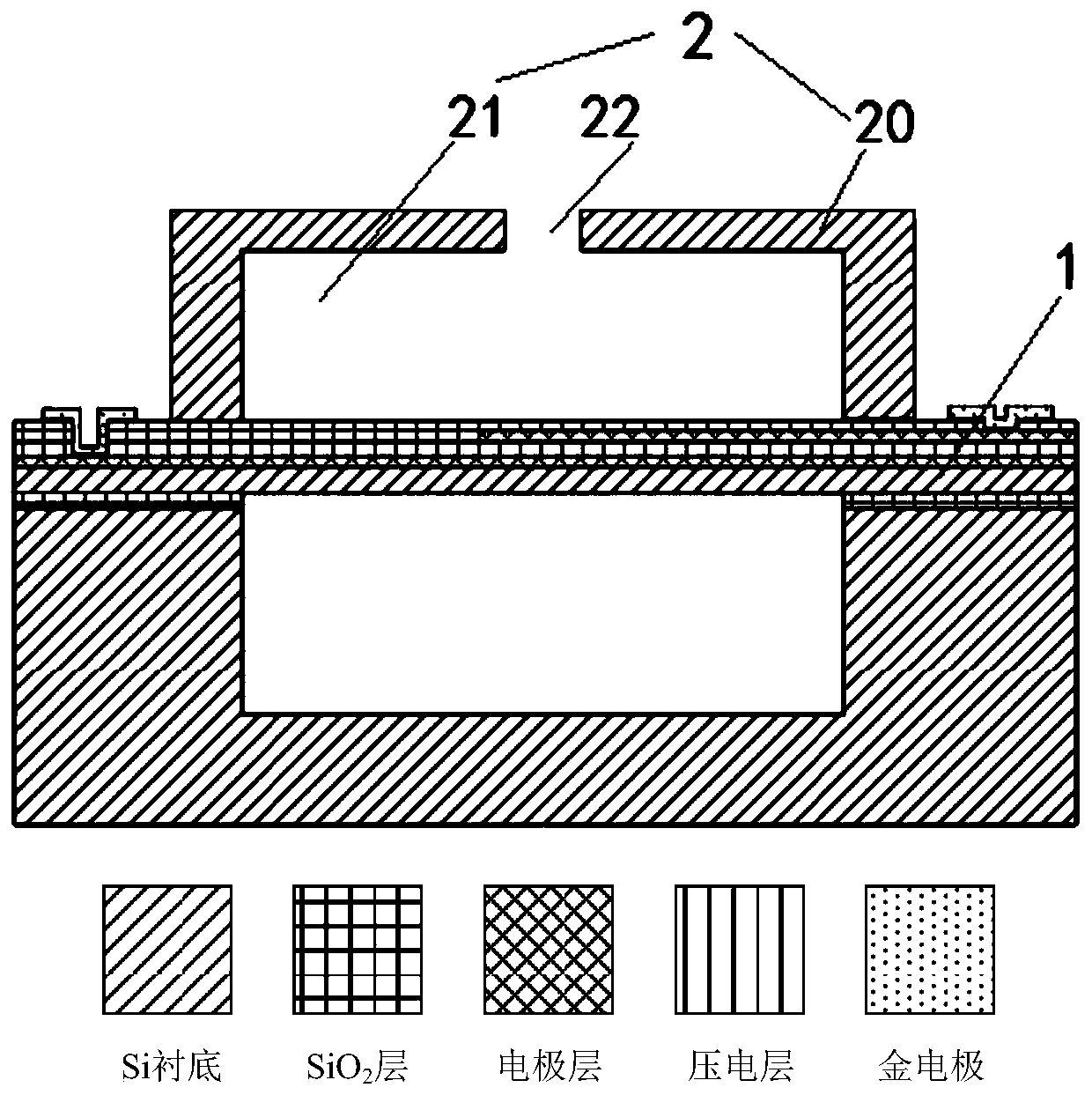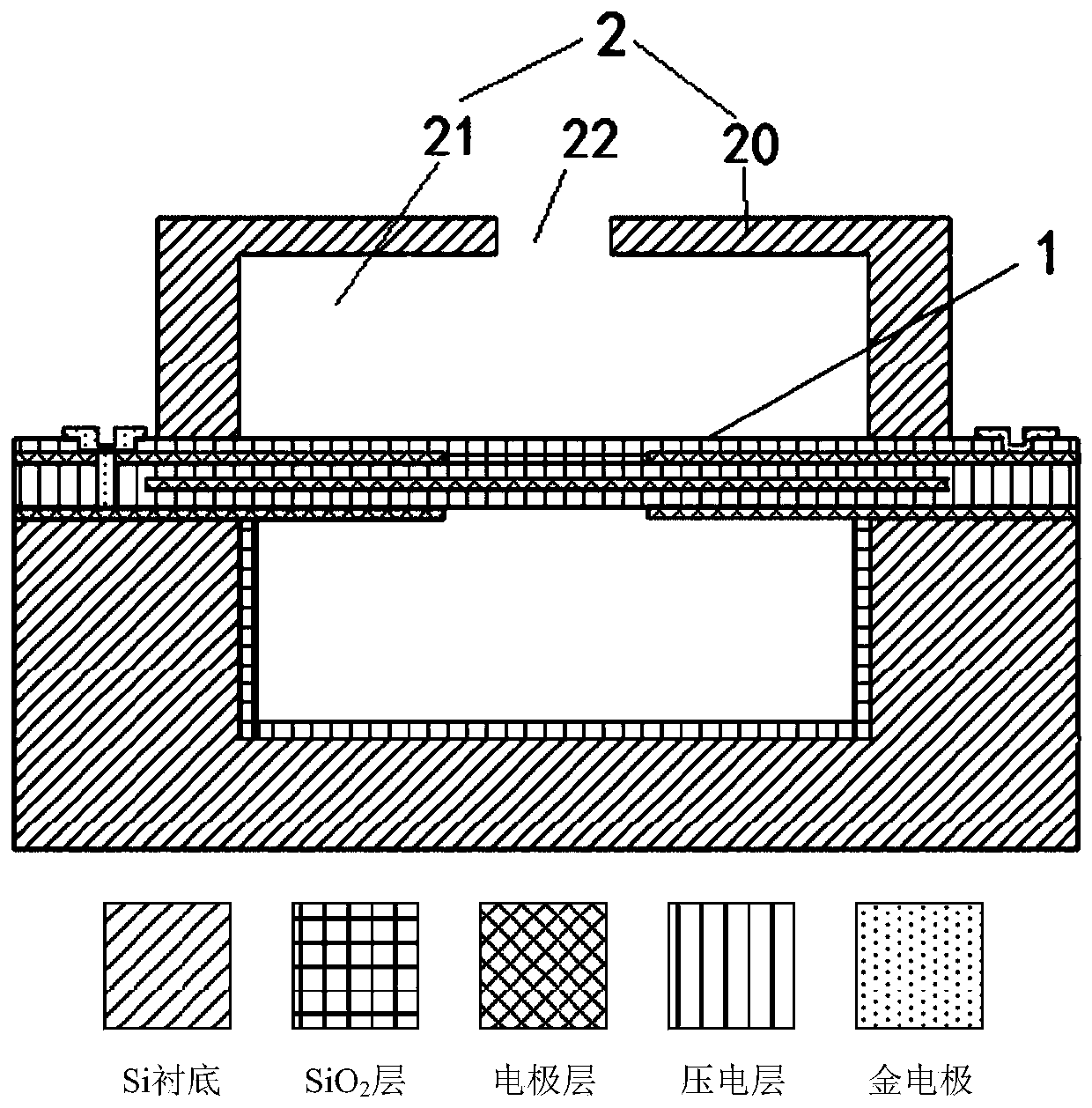Frequency-adjustable sound wave receiving device based on Helmholtz resonant cavity
A sound wave receiving and resonant cavity technology, applied in the field of sensors, can solve the problems of low transmission sound pressure and low sensitivity, and achieve the effect of improving the efficiency of electroacoustic energy conversion
- Summary
- Abstract
- Description
- Claims
- Application Information
AI Technical Summary
Problems solved by technology
Method used
Image
Examples
Embodiment Construction
[0024] For a better understanding of the present invention, the following examples are further descriptions of the present invention, but the content of the present invention is not limited to the following examples.
[0025] The present invention provides a frequency-tunable acoustic wave receiving device based on a Helmholtz resonant cavity, which includes a Helmholtz resonant cavity 2 and a MEMS acoustic sensor 1 . The Helmholtz resonant cavity 2 is arranged on the MEMS acoustic sensor 1 . The Helmholtz resonant cavity 2 includes a hollow silicon structure 20 disposed on the surface of the MEMS acoustic sensor 1, a cavity 21 formed by the hollow silicon structure 20 and the surface of the MEMS acoustic sensor 2, and a cavity 21 formed on the silicon structure 20 and connected to the cavity 21. Connected through hole 22. The through hole 22 communicates the external atmosphere with the cavity 21, so as to facilitate the propagation and resonance of sound waves. In addition...
PUM
 Login to View More
Login to View More Abstract
Description
Claims
Application Information
 Login to View More
Login to View More - R&D
- Intellectual Property
- Life Sciences
- Materials
- Tech Scout
- Unparalleled Data Quality
- Higher Quality Content
- 60% Fewer Hallucinations
Browse by: Latest US Patents, China's latest patents, Technical Efficacy Thesaurus, Application Domain, Technology Topic, Popular Technical Reports.
© 2025 PatSnap. All rights reserved.Legal|Privacy policy|Modern Slavery Act Transparency Statement|Sitemap|About US| Contact US: help@patsnap.com



